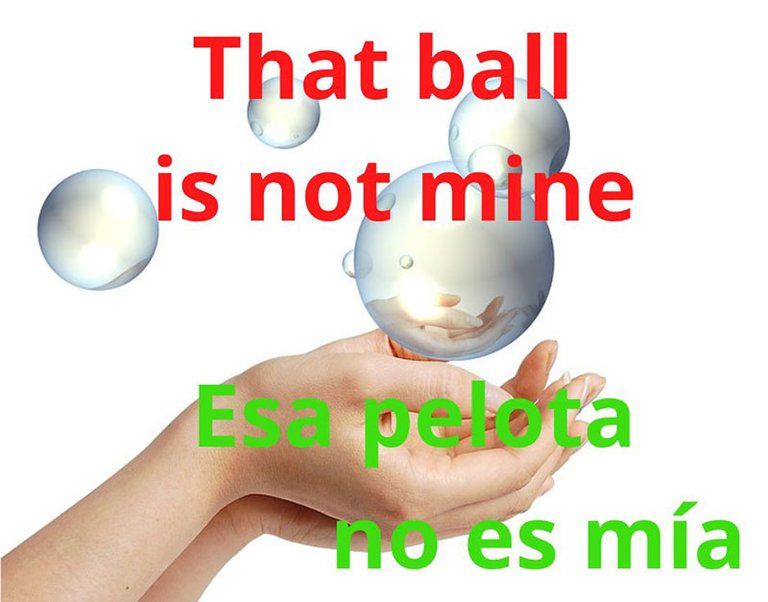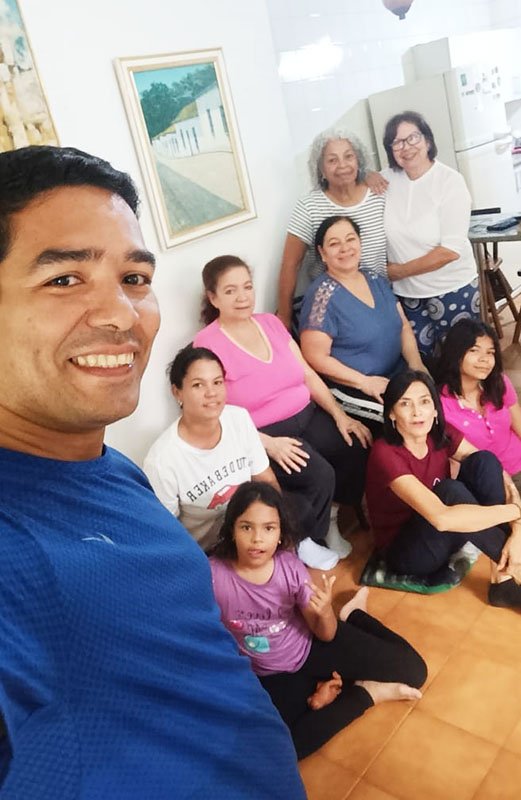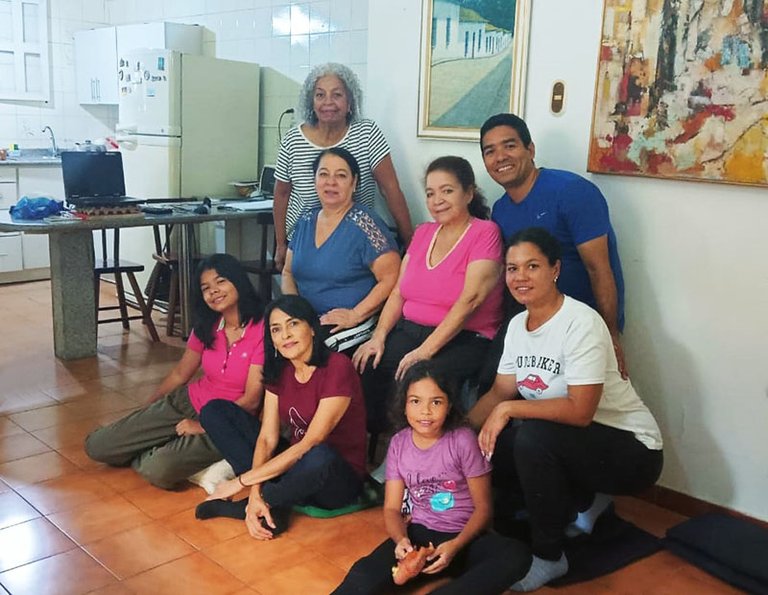
¿Puede alguien enseñarte a ser feliz? La respuesta es un categórico No. La felicidad es un sentimiento que cada uno lo vive a su manera y la va construyendo con los elementos que toma del ambiente, con lo que vivencia en los diferentes grupos donde interactúa: familia, escuela, trabajo, amigos...
Lo que sí es posible es que dentro de estos grupos de interacción se dejen caer semillas positivas que nos ayuden a construir nuestra estructura de felicidad, unos porque decidimos de manera consciente e intencionada, cultivarlas para vivir en felicidad y otros, que no teniendo consciencia plena de los significados, como niños o adolescentes, las mantendrán en estado latente, hasta que decidan darle vida.
Can anyone teach you to be happy? The answer is a categorical No. Happiness is a feeling that everyone lives in their own way and builds it with the elements they take from the environment, with what they experience in the different groups where they interact: family, school, work, friends...
What is possible is that within these groups of interaction positive seeds are dropped that help us to build our structure of happiness, some because we decide consciously and intentionally, to cultivate them to live in happiness and others, who not being fully aware of the meanings, as children or adolescents, will keep them in a latent state, until they decide to give life to them.

Este fin de semana recibí en mi casa a una tía, venía de visita a saludarnos, pero también aprovechamos organizar un taller de creencias centrado en la felicidad que consideramos que nos haría bien a cada uno de los participantes.
La tía, que como dice ella, ya se encuentra cercana al piso ochenta, siempre ha sido mi mentora en este camino de crecimiento personal, además de ser un ejemplo de ecuanimidad que me gusta seguir, su energía, claridad mental, sus abrazos, palabras y percepciones me producen bienestar, me reconforta e invariablemente me lleva a la reflexión del dónde estoy y donde quiero estar.
En esta oportunidad no fue distinto y hoy les quiero comentar sobre uno de los juegos que realizamos llamado: Esa pelota no es mía. El juego consiste en que la facilitadora inicia lanzando una pelota a un jugador, este se la lanza a otro y este se la devuelve al facilitador, es decir, había que triangular la jugada, todas debían llegar a la facilitadora.
Suena fácil, pero en la dinámica te perdías porque había muchas pelotas en el aire, por supuesto como juego al fin, nos causaba mucha gracia y diversión, pero pasaron aproximadamente diez minutos hasta que hubo coordinación y las pelotas viajaban hacia su destinatario y este sabía lo que le correspondía hacer.
This weekend I received an aunt in my house, she came to visit us to say hello, but we also took the opportunity to organize a workshop on beliefs focused on happiness that we believe would be good for each of the participants.
The aunt, who as she says, is already close to the eightieth floor, has always been my mentor in this path of personal growth, besides being an example of equanimity that I like to follow, her energy, mental clarity, her hugs, words and perceptions produce me well-being, comforts me and invariably leads me to reflect on where I am and where I want to be.
This time it was no different and today I want to tell you about one of the games we played called: That ball is not mine. The game consists of the facilitator throwing a ball to a player, who throws it to another player, who then throws it back to the facilitator, that is to say, the game had to be triangulated, all the balls had to reach the facilitator.
It sounds easy, but in the dynamics you got lost because there were many balls in the air, of course as a game at the end, it caused us a lot of fun and fun, but it took about ten minutes until there was coordination and the balls traveled to its recipient and he knew what he was supposed to do.

Y fue precisamente este “caos”, el que me dejó mayor enseñanza, porque ¿cuántas pelotas (situaciones, problemas, oportunidades), llegan a mi vida y no las veo, las dejo caer o no sé qué hacer con ellas?; y ¿cuántas agarro que no me corresponden?
El juego se enfocó en esta última pregunta como elemento que nos resta para ser felices, porque asumimos responsabilidades que no nos corresponde, nos empreñamos en querer resolver problemas de otros, permitiendo que nos afecten sin darnos cuenta que esa pelota no es nuestra. Mucho hablamos de empatía, solidaridad y eso está bien, solo que es conveniente entrar en estos procesos con protección, que no es más que tener claridad de los límites necesarios para no adueñarnos de pelotas que no son nuestras.
El juego fluye cuando todos los involucrados comprendemos cuál es nuestra pelota y hacia donde hay dirigirla. Saber cuáles son nuestras pelotas es comprender y asumir nuestras responsabilidades y, por tanto, actuar en función de ello.
And it was precisely this "chaos" that taught me the most, because how many balls (situations, problems, opportunities) come into my life and I don't see them, I drop them or I don't know what to do with them; and how many I catch that don't correspond to me?
The game focused on this last question as an element that detracts us from being happy, because we assume responsibilities that do not correspond to us, we try to solve other people's problems, allowing them to affect us without realizing that the ball is not ours. We talk a lot about empathy, solidarity and that is fine, but it is convenient to enter into these processes with protection, which is nothing more than having clarity of the necessary limits so as not to take possession of balls that are not ours.
The game flows when everyone involved understands what our ball is and where to direct it. To know what our balls are is to understand and assume our responsibilities and, therefore, act accordingly.

Y tú, ¿sabes cuáles son tus pelotas y qué hacer con ellas? ¿Con frecuencia te encuentras jugando con pelotas que no son tuyas? ¿Qué haces para soltar las pelotas que no son tuyas?
Nadie nos puede enseñar a ser felices, pero si podemos aprender a darnos cuenta que nos limita para ser felices y a seleccionar las mejores semillas para cultivarlas con dedicación y amor, manteniendo presente la dulce frase: venimos para ser felices.
And you, do you know what your balls are and what to do with them? Do you often find yourself playing with balls that are not yours? What do you do to let go of the balls that are not yours?
No one can teach us how to be happy, but we can learn to realize what limits us to be happy and to select the best seeds to cultivate them with dedication and love, keeping in mind the sweet phrase: we came here to be happy.

Translated with www.DeepL.com/Translator (free version)
Fuente de imágenes: Archivo personal - Portada



MIS REDES SOCIALES






Be Entrepreneur


